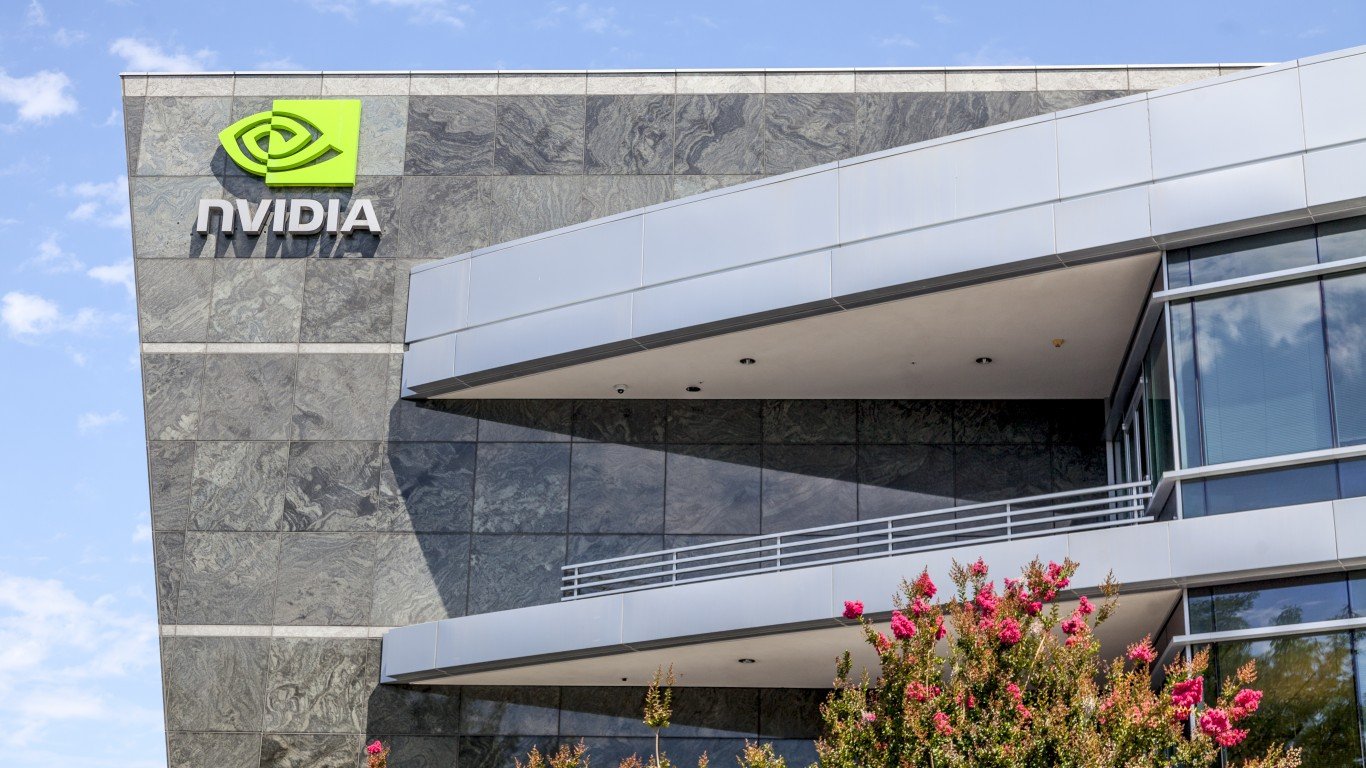

Its name is inspired by the Latin word for envy, and Nvidia Corp. (NASDAQ: NVDA) certainly has become the envy of tech companies and investors as it, probably more than anyone else, has ridden the artificial intelligence (AI) tsunami over the past several years. The company’s market capitalization reached $1 trillion last year. Then it quickly raced to $2 trillion, making it one of the most valuable companies in the world, and its stock is one of the so-called Magnificent Seven that have been driving the stock market. Nvidia shows no signs of stopping yet and could be on its way to joining Apple and Microsoft in the $3 trillion club.
That raises the question: How much does Nvidia make every minute? Let’s take a look.
How Does Nvidia Make Its Money?

The tech giant was founded in 1993 and went public early in 1999. Its focus from the beginning was on graphics processing products, which were particularly important in the video game industry. The company struggled in the first few years but eventually took off, winning the contract to develop the graphics hardware for Microsoft’s Xbox game console.
Today, the graphics business segment is Nvidia’s second largest revenue generator. Computing and networks, the segment that includes artificial intelligence, is now its largest revenue generator. Virtually every major tech company, including Amazon, Google, Meta, Microsoft, and Oracle, has made use of Nvidia chips.
Here is a look at annual revenue and revenue per minute for the past five years:
| Fiscal Year | Annual Revenue | Revenue per Minute |
| 2023 | $60.92 billion | $115,905.63 |
| 2022 | $26.97 billion | $51,312.79 |
| 2021 | $26.91 billion | $51,198.63 |
| 2020 | $16.68 billion | $31,735.16 |
| 2019 | $10.92 billion | $20,776.26 |
How Much Does Nvidia Really Make?

Revenue is not the full picture, of course. Net income, also called profits or earnings, is what is left after expenses such as cost of goods sold, taxes, and interest are subtracted. In other words, it is the bottom line (of the income statement), as opposed to revenue, the top line.
As Nvidia’s top line has grown, so too have its operating expenses. In January of 2020, quarterly operating expenses totaled about $2.11 billion. That has climbed to $8.49 billion most recently. So how has that affected the bottom line?
Here is a look at annual net income and net income per minute for the past five years:
| Fiscal Year | Annual Net Income | Net Income per Minute |
| 2023 | $29.76 billion | $56,621.00 |
| 2022 | $4.37 billion | $8,310.50 |
| 2021 | $9.75 billion | $18,554.03 |
| 2020 | $4.33 billion | $8,242.01 |
| 2019 | $2.80 billion | $5,319.63 |
How Has Nvidia Stock Fared?

A decade ago (before the founding of OpenAI, which kicked off the AI explosion), Nvidia was struggling to find revenue growth. Shares ended 2014 trading for about $5 apiece (split-adjusted). Since then, they are up about 19,000% and were last seen trading for about $950 apiece. Most of that growth has been in the past year. The stock reached an all-time high of $974 earlier this month. That is greater than the current consensus price target. However, the high price target is up at $2,542.26, which represents almost 169% additional upside. (See two things that point to an upcoming Nvidia stock split.)
Sponsored: Find a Qualified Financial Advisor
Finding a qualified financial advisor doesn’t have to be hard. SmartAsset’s free tool matches you with up to 3 fiduciary financial advisors in your area in 5 minutes. Each advisor has been vetted by SmartAsset and is held to a fiduciary standard to act in your best interests. If you’re ready to be matched with local advisors that can help you achieve your financial goals, get started now.
Thank you for reading! Have some feedback for us?
Contact the 24/7 Wall St. editorial team.



